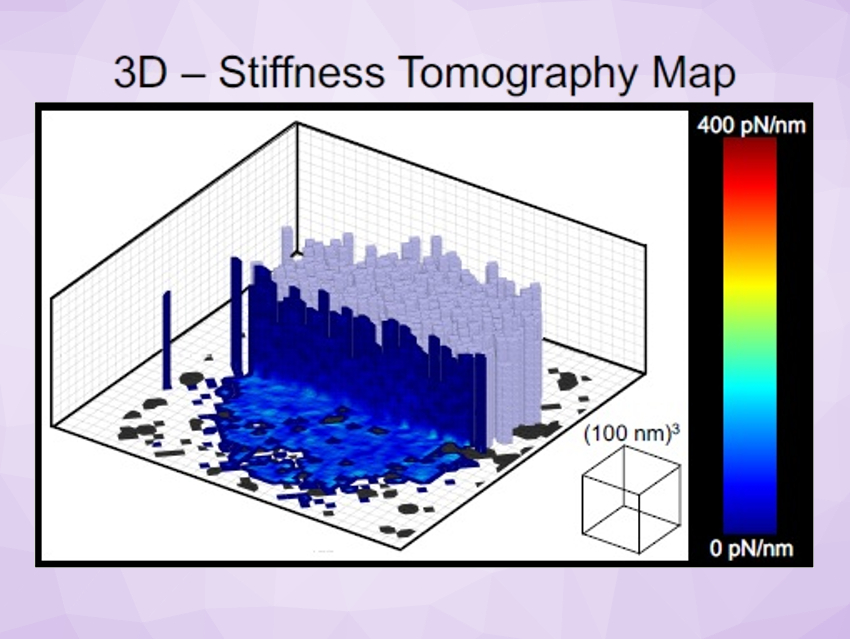Surface coatings based on soft nanohydrogels are multifunctional materials with possible applications, e.g., in biomedicine, sensors, and catalysis. The structure of soft nanogels is important in all of these fields, but so far, it could not be investigated on the nanoscale. Ultra‐soft nanogels seem to “disappear” in classical imaging modes since a sharp microscope tip fully penetrates these porous networks with very low forces.
Walter Richtering, RWTH Aachen University and DWI—Leibniz Institute for Interactive Materials, both Aachen, Germany, and colleagues have used an atomic force microscope (AFM) with a sharp tip to reveal the internal structure of extremely soft poly(N‐isopropylacrylamide) (PNIPAM) nanogels. The team used force volume mode measurements, which not only record the topography of the surface but also provide information about the density of the material.
Since the probe is smaller than the meshes of the polymeric network, the tip can penetrate the nanogels and measure the local penetration resistance. The contact resistance is a measure for the local network density with nanometric and piconewton resolution. On the basis of this information, stiffness tomographs of soft nanogels can be resolved and reconstructed in all three dimensions.
The studied ultra‐low cross‐linked (ULC) nanogels are extremely soft, nevertheless, their disk-like structure could be resolved. Stiffness tomography can show nanoscale heterogeneities and could also help to understand other porous and soft systems such as cells.
- Stiffness Tomography of Ultra‐Soft Nanogels by Atomic Force Microscopy,
Marie Friederike Schulte, Steffen Bochenek, Monia Brugnoni, Andrea Scotti, Ahmed Mourran, Walter Richtering,
Angew. Chem. Int. Ed.2020.
https://doi.org/10.1002/anie.202011615


